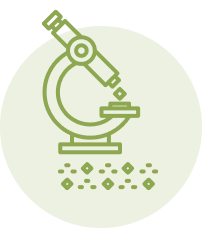No matter how new or experienced you are at anything, chances are you’re going to make a few mistakes along the way. Gardeners are no exception, and many people make mistakes when it comes to fertilizer, the plants they grow, and their pest repellants. These errors can make gardening harder, and often cause more work. But if you avoid these common mistakes, you’ll make your life easier, and help ensure a healthy, thriving garden. Here are six of the most commonly made mistakes to avoid in the garden.
- Choosing the wrong place to put your garden. This is one of the most common gardening mistakes, and it happens before plants even start growing. In order for a garden to flourish, it needs to have proper soil conditions, including nutrients and water drainage, as well as the appropriate amount of light. And while you can use soil amendments to fix some common soil issues, if your garden is outside, there’s very little you can do about sunlight. It doesn’t matter how much tender loving care you give your plants, or how much fertilizer you use, plants that need sunlight will never do well in the shade. Thus, make sure you choose your garden location carefully. Pay special attention to the amount of sunlight in the area and the amount of sunlight your various plants will require.
- Not knowing the soil’s pH. It’s important to know what soil pH your fruit, vegetables, herbs, flowers, and plants will need before you start gardening, or they will not reach optimal growth. Growing plants in the wrong soil pH causes nutrients to be locked up in the soil. This means that no matter how much fertilizer you apply, plants will not be able to access the nutrients they need. Search for your ideal soil pH for your plants, and do so before you start planting. If your soil pH is too high, try our Fast Acting Sulfur®. Or, if you’re looking to raise your soil pH, give Fast Acting™ Lime a try.
- Not planting correctly. There are several gardening mistakes that fall under this category. Planting bulbs like onions and garlic upside-down, for instance, is a common mistake. So is planting too many seeds in one area, which will cause a garden to be overgrown, and some plants to be crowded out. And, overshadowing all of these issues is planting too early or too late in the season. Different plants have different growing seasons, so they may need to be planted at different times. Make sure you take all of these factors into account when you plant your garden. Place seeds in the ground at the ideal time, ensuring that they’re not too close together. Have a general layout and plan before you actually put anything into the ground.
- Going overboard. Some gardeners go overboard with everything. They use too many soil amendments, too much fertilizer, weed killer, or pest control, and then they water every plant for hours. None of this is good for plants, and will do more harm than good. Moderation is key. Don’t give your plants too much of any one thing, and if there are special care instructions for certain plants, follow them.
- Proactive pest control. Be on the lookout for pest and disease problems before they get out of control. Regularly examine plants for signs of pest presence. Check the undersides of leaves. Be on the lookout for signs of insect eggs, feeding damage, and insects. When pest populations are small, they are more easily controlled with chemical-free techniques like hand picking or spraying them off with a stream of water.
- Forgetting what you planted. As garden size grows or the diversity of varieties planted increases, so does the chance of forgetting what was planted. Labelled plant tags in the garden helps with plant identification. But remember that plant tags can fade over time, even when written in so-called “permanent” marker. For this reason, it is very helpful to create a garden map that notes what was planted and where. This can be a lifesaver if plant tags fade or are lost in the garden. More long-lived labelling options include metal plant tags, or painting plant names on stones placed in the garden.
These are six of the most common gardening mistakes that can impact plants and gardeners for entire seasons. The key to a successful garden is planning– know where you want to put the garden, know the soil’s pH, how to plant and maintain the garden, how to ward off unwanted visitors, and remember what you planted. Proactive measures will help you save time in the long run, and help you create a fruitful garden.
For more information on preventative gardening mistakes, contact us today!



